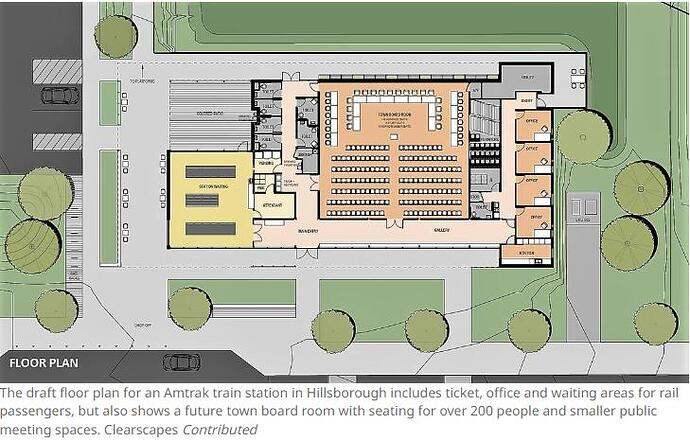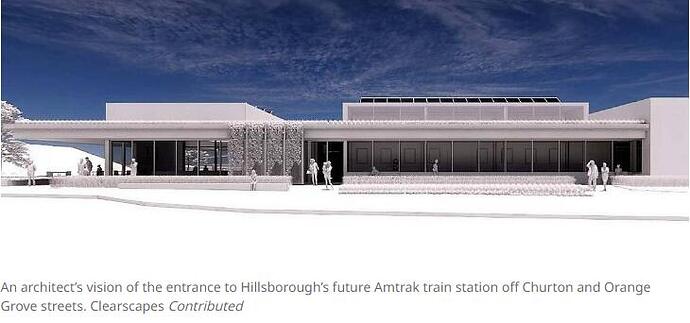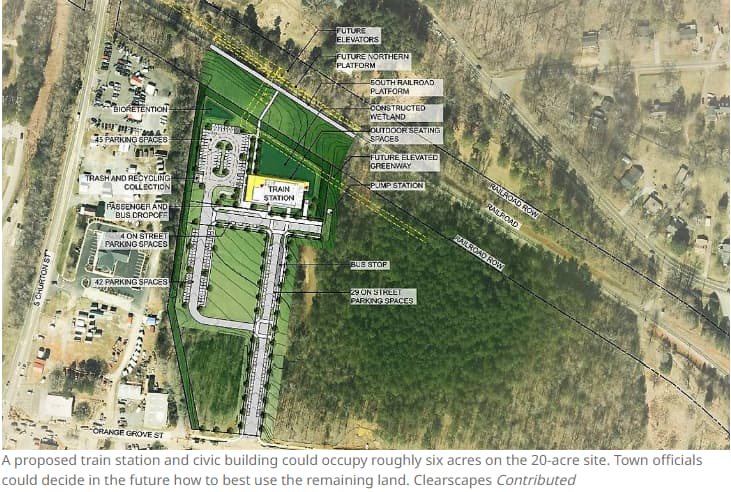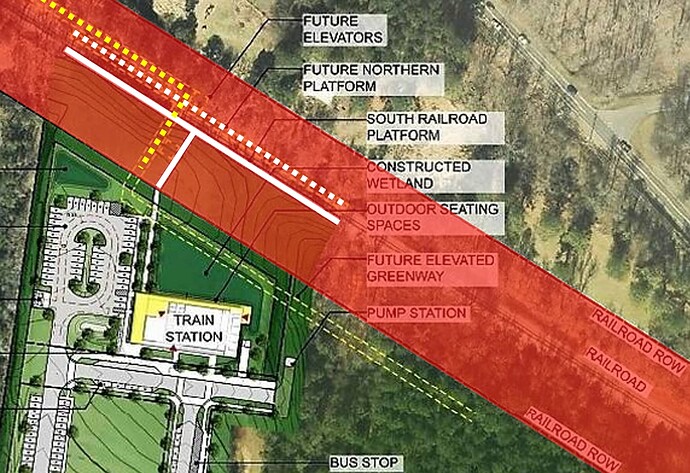Durham’s MPO will hear updates about this project later today, including more information about the consequences of building commuter rail for the Triangle in phases (and which phase should be built first).
To recap what we’ve covered earlier, this project is now expected to cost $2.8B ~ $3.2B in 2030 dollars to build, and $42M/year to operate and maintain starting somewhere between 2033 and 2035, carrying a conservative estimate of 12k and 18k passengers daily. Even if the federal government chooses to award us with grant funding, we still don’t have enough taxes to build the entire thing at once -even though it makes societal and financial sense to do so.
Here’s a summary I made of the infrastructure needs that GoTriangle identified in the slide deck (click on the top left icon to display the sidebar, which will also let you toggle additional layers):
Given these infrastructure needs, here's how the three potential phases of the full rail line could look. (click me!)
The “complexity” column is basically the sum of the issues pointed out in the map. It’s a reflection of the following observations made in the slides:
The reason for the Durham/RTP segment being so complicated and costly is due to grade separation and other heavy trackwork being required. However, that need for specific kinds of work is a double-edged sword; (hold that thought as you keep reading…)
The Cary/Raleigh segment may be less complicated, but the work that does need to go in requires careful coordination with multiple rail companies and governments. Every time a stakeholder drops the ball or needs more time to carefully think things through, it adds another straw -and it’s never clear if it’ll be enough to break the camel’s back.
And then there’s the Raleigh-Garner(-Clayton?) bit. Sure, it’s the cheapest and easiest to build, but focusing on this segment first would be betraying the big promise of the Greater Triangle Commuter Rail project. Not the best approach if you want to win back brownie points for rebuilding trust.
Staff on this project also suggest an additional strategy to make regional rail more likely to happen. (click me!)
The presentation also notes that delaying certain parts of our rail line to the competitive grants process could also give us better project ratings (which increases the odds of getting federal aid). This is important since consultants on this study have noted that “population density and ridership data are holding back [their predicted] ratings”.
Without a magical crystal ball, we can’t know for sure whether a phased approach would help or hurt project ratings. But we do know that, with a phased approach:
-
We’d have more time to demonstrate to federal staff that the Triangle is growing in a denser, transit-friendly way, and that useful transit-supportive land use policies are here to stay (and ready to help commuter rail, too). While our recent market analyses suggest that we could become transit-supportive in the future, that’s not as strong as saying that you have it in your hands at the time of writing.
-
We could experiment with all-day service plans that align with post-pandemic travel patterns. This lets us see if that gives us better-than-expected ridership.
-
We can break off the elimination of railroad crossings (especially in parts of Durham that get deferred from an initial rail buildout) into their own projects. This makes them eligible for several federal grant programs, including those that cover up to 80% of the cost. Plus, state funding for these sorts of projects can count towards the local match to federal grants (which would make it easier for us to apply for federal help to extending regional rail to Durham, for example).
-
As the slide deck notes, “double-tracking projects are eligible for multiple programs up to 80% federal funding if they have benefits for intercity passenger rail and freight. One or more sections of double-track could be submitted as a standalone project”, which is helpful since we have several such sections (see my map).
-
The slides also note that “Durham, Cary, and Raleigh Amtrak station improvements could be submitted as standalone projects, to the extent they would benefit intercity passenger rail.”
Remember that this is still a sneak peek of what’s to come. Most of these updates aren’t supposed to be released to the general public until after the holidays -so you still have plenty of time to think things through before you tell our planners what you think.



 ), S-Line trains, and all the other new Amtraks detailed in ConnectUS.
), S-Line trains, and all the other new Amtraks detailed in ConnectUS.




